A variety of RPG-7 projectiles have been observed during the Syrian conflict, originating from a range of countries. As well as PG-7V or similar unitary HEAT projectiles from Russia, Bulgaria, China, and Egypt, a few of the more uncommon examples are as follows:
PG-7VR (Russia)
The PG-7VR projectile, seen here in Hama, is a Russian-made tandem charge HEAT round developed by the state-owned enterprise Bazalt in 1988, and designed to defeat Explosive Reactive Armour (ERA). A 64mm shaped charge is carried forward of the main shaped charge, separated by an extension boom. This charge is intended to detonate the ERA of the target vehicle, allowing the primary 105mm charge to penetrate the regular armour. It weighs in at approximately 4.5kg, has an operational range of around 200m, and is supposedly capable of penetrating up to 600mm of Rolled Homogenous Armour (RHA) after detonation of ERA by the forward charge. The primary explosive is 1.43kg of OKFOL (окфол), an HMX-based compound. A PG-7VR can also be seen in this video.
Cobra (Egypt)
The image above, captured from this video, shows an Egyptian-manufactured unitary HEAT projectile. The Cobra is a was developed by the state-owned Arab Organization for Industrialisation (الهيئة العربية للتصنيع ). A tandem charge variation, an evolution of the Cobra single-stage HEAT projectile, also exists. The warhead of the tandem charge contains a small charge forward of the primary charge, integrated into the elongated nose probe. The projectile shown has a shorter nose probe. Both projectiles are stated as being capable of penetrating over 500mm of RHA. The projectile weighs approximately 2.25kg, and is said to have an effective range of 300m. The main charge of the projectile appears to be approximately 85mm in diameter (see comparison below).
Iranian Tandem-Charge projectile [designation unknown] (Iran)
A screenshot from this video shows an Iranian produced tandem HEAT charge projectile. Little is known about this projectile, and what OSINT is available seems to come primarily from Iranian sources. The tip of the warhead features a 30mm precursor charge that is integrated into the elongated nose probe, ahead of an 80mm main charge. The projectile weighs 2.5kg, is supposedly effective out to 300m, and is said to be able to penetrate 350mm of RHA after detonating ERA.
TBG-7V (Russia)
The TBG-7V is a thermobaric projectile developed sometime in the late 1980s. It is designed to disable enemy personnel in urban or mountainous terrain (including entrenched enemy combatants in bunkers, buildings, and the like) through a combination of heat and overpressure, but also has a secondary fragmentation effect. The blunt-nosed warhead is 105mm in diameter, and weighs approximately 4.5kg. It contains 1.9kg of 100MI-3L (100МИ-3Л) thermobaric composition, as well as 0.25kg of A-IX-1, an RDX-based compound. The effective range of the projectile is given as 200m, with a maximum range of 700m. The lethal radius of the projectile is 10m. (Photo credit: Syrian Revolution Memory Project)
OG-7V or derivative (Russia/Bulgaria)
This screenshot (taken from a video here) shows an OG-7 (or a Bulgarian copy) anti-personnel projectile. These projectiles are designed to engage enemy personnel, disabling them through a combination of HE and fragmentation effects. The warhead has a point-detonating fuze, is 40mm in diameter (the same diameter as the expelling charge/rocket motor), and has an effective range of 180m, and a nominal maximum range of 900m`. The 2.0kg projectile contains approximately 210g of A-IX-1.
Type 69 HE Airburst / DZGI-40 (China)
The Chinese-manufactured Type 69 HE Airburst (DZGI-40) projectile features a warhead that operates in a similar fashion to ‘bounding’ anti-personnel (APERS) landmines. When the 75mm warhead strikes the ground, it is propelled upwards by a jump mechanism, and detonates at a height of approximately 2 metres. Somewhere in the region of 800 steel balls and fragments of the case are propelled outwards, giving the warhead a lethal radius of 15m. The projectile is 825mm in length, weighs 2.8kg, and has an effective range of up 1,500m. These projectiles are, unsurprisingly, designed to be employed in an anti-personnel role. They are typically outfitted with a Chinese ‘DREOI’ fuze. (Photo credit: Olivier Voisin)
This composite image was assembled by Bjørn Holst Jespersen from a variety of image sources, including video stills and reference photographs. It compares the Egyptian Cobra Tandem projectile with PG-7V, PG-7VL, and PG-7VR projectiles. The diameters of the PG-7V and PG-7VL warheads are 85mm and 93mm, respectively.
This post will be updated if and when necessary. Should you spot any interesting RPG-7 projectiles (or any other interesting small arms, light weapons, ammunition, ordnance etc. etc.) in Syria, you can always contact me. Some oddities I’ve observed include an ENERGA rifle grenade, a few RL-83 Blindicide launchers, a Beretta Model 1938/42, an FN CAL, and a host of other bits and pieces.
Update 19/09/2012: OG-7V fragmentation round added.
Update 13/10/2012: Information on further projectiles for the RPG-7 seen in Syria can be found here.
Update 06/11/2012: Post updated to reflect further information received on Egyptian Cobra projectiles.


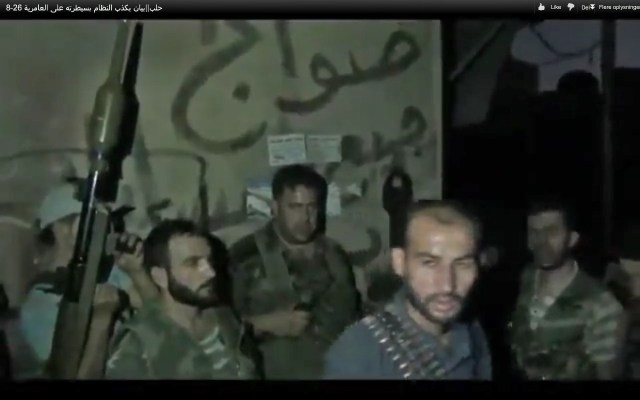

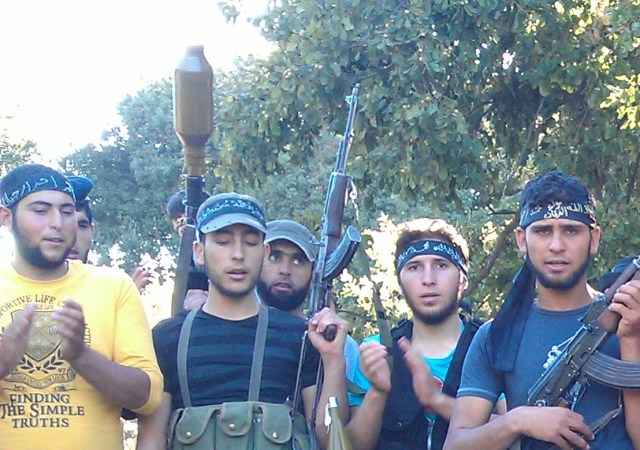
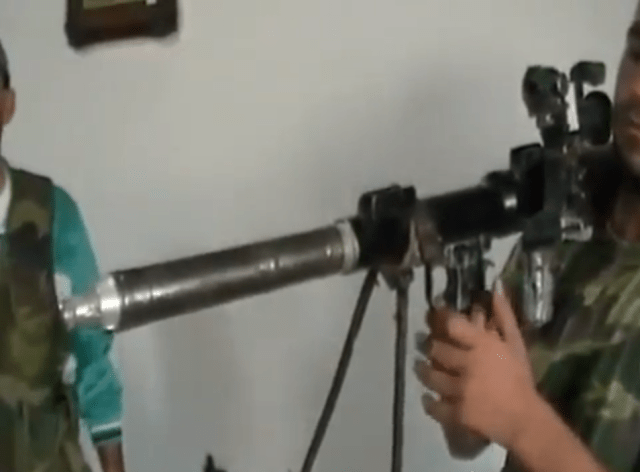
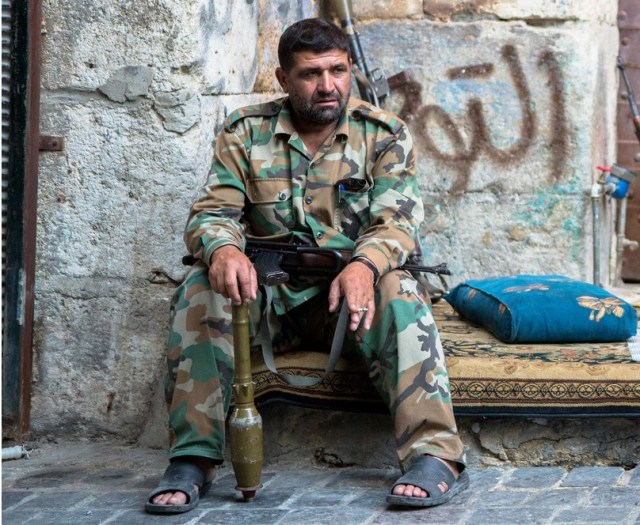
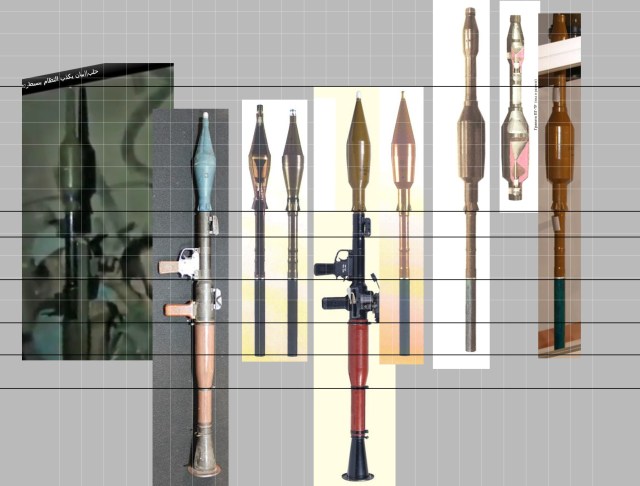
Hello a couple of months ago, on You Tube, I noticed some FSA fighters using 9mm Sterling SMG’s attacking a police station in Aleppo. Not standard issue Syrian army?
Hi Al, sorry for the slow reply. I’ve seen a few L2A3s crop up in photos (haven’t seen any in videos yet, so please forward those links if you happen to still have them) from Syria. Whilst I don’t believe the Sterling was issued in Syria, they have been issued in Lebanon and also Iraq.
http://www.military.com/video/guns/machine-guns/syrian-rebel-sports-a-nice-m4/1653045833001/
A lot of M16A1s and some M4s turning up in Syria. Likely from Lebanon, for the most part.
Pretty damn cool blog you have going here sir!
Cheers, Jeremy.
Great post. Thanks a lot and i’m looking to contact you. Will you please drop me a mail?
[…] the weeks since I published my first piece on RPG-7 projectiles that have been sighted in Syria, a number of people have responded to my request for further material. As C.J. Chivers notes in […]
hello sir, the syrian government keeps claiming that the FSA has Israeli weapons, and showing photos of them. How can I know from these photos or reports if this claim is true, or exactly where the weapons are coming from?
Andron,
I have seen a handful of weapons which were definitely manufactured in Israel, however they are reasonably old and weapons of the same model have cropped up in regional conflict zones before. Being ‘sure’ of anything is very tricky when it comes to arms tracing, but I’m happy to look over some specific photos if you get in touch.
Thanks for posting this. Very interesting information for us over here!
[…] Previously documented in Syria, these projectiles feature a tandem high explosive anti-tank (HEAT) warhead, designed to defeat the explosive reactive armour (ERA) of modern armoured fighting vehicles. According to Iranian sources, the projectile contains a 30 mm precursor charge inside the elongated nose probe, and an 80 mm main charge. Weighing 2.5 kg, it is believed to have an effective range of approximately 300 metres and can penetrate up to 350 mm of rolled homogeneous armour (RHA) after detonating ERA. Its designation is unknown. […]